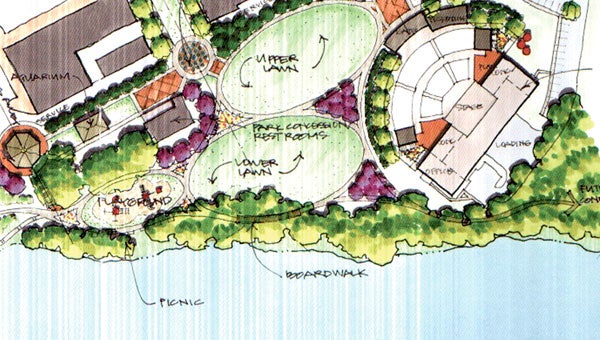Time’s ticking on park grant
Published 11:13 pm Tuesday, February 1, 2011
Time is ticking on a $250,000 grant to help see construction of an amphitheater for the Riverfront Park.
Selma city officials were notified recently of the grant from the Alabama Department of Economic and Community Affairs through a letter of conditional commitment. The letter says the city has 75 days to comply with the department’s requirements for the grant or it goes back to the state.
Jim Plott, a spokesman for ADECA, said Monday the city has until Feb. 28 to let the department know it has met the terms to receive the grant or the money returns to the state.
At issue is a mandate for an administrator for the grant.
Several weeks ago, Selma Planning and Development Director Charlotte Griffeth recommended the city hire Janey Galbraith of Galbraith and Associates, a grant-writing firm based in Mobile, to act as administrator.
Galbraith would fill out paperwork and ensure proper communication regarding the ADECA grant.
“It’s not the complexity of it,” Griffeth said of the project administrator, “it’s time consuming.”
Plott said ADECA wants someone with Community Development Block Grant experience. Galbraith, he said, would be a good pick.
If the city does not select someone with experience, Plott said he didn’t know if ADECA would pay the administrative costs, which would total about $50,000.
“I don’t know if the administrative costs would be paid if someone from within the city did it,” Plott said.
Some city council members, such as president Cecil Williamson, have labeled the work on the Riverfront Park as “piecemeal.” Some say they don’t know where the project stands or where it is going.
Mayor George Evans said he understands the frustration, but the city has completed portions of the project as money has become available.
“Little by little we are getting the funds we need,” he said.
The amphitheater project has changed since the Riverfront Park’s conception. In the beginning, the amphitheater was an open stage structure, similar to the one in Montgomery on the riverfront.
But city officials saw the project under way in Tuscaloosa and other projects similar in Georgia and Tennessee. The amphitheater concept changed.
Now, the city plans to take a warehouse on the site and create a stage in the front. At the rear of the stage, workers will convert the area into dressing rooms and bathrooms. The project also calls for an electrical room. Other plans call for a dock on the back to allow acts to pull up their semi-trucks loaded with equipment.
Eventually, the city will renovate the warehouse’s wings into offices and other offerings, but not now.
“We’re going to do just this center part now,” Griffeth said. “But it will be a class act.”
In front of the stage, plans call for a grassy area from the top, reaching down to a concrete sidewalk. On the other side of the sidewalk, the city will offer VIP boxes to industries and businesses in partnership with bringing acts to the city. Down in front of the stage, in what an auditorium would call the orchestra seats, plans call for more room for higher-price tickets.
“We’re preserving a historic building,” she said. “We’re putting a stage inside there.”
Selma will receive some help in addition to grant dollars and bond dollars.
For example, Montgomery Job Corps has promised enough hands to help replace the roof on the warehouse. Those workers will also work on other projects in the community, Griffeth explained.
Meanwhile work continues on other areas of the park. Workers will continue to build out the concrete walkway and put in underground conduits for water, electricity and security cameras on the site this week, Griffeth said.
Evans believes the project will build out and become a source of pride for Selma. He understands the costs.
“Nothing comes cheap,” he said. “To me, personally, I can visualize down the road that amphitheater; that walk down there being an asset to our city.”






